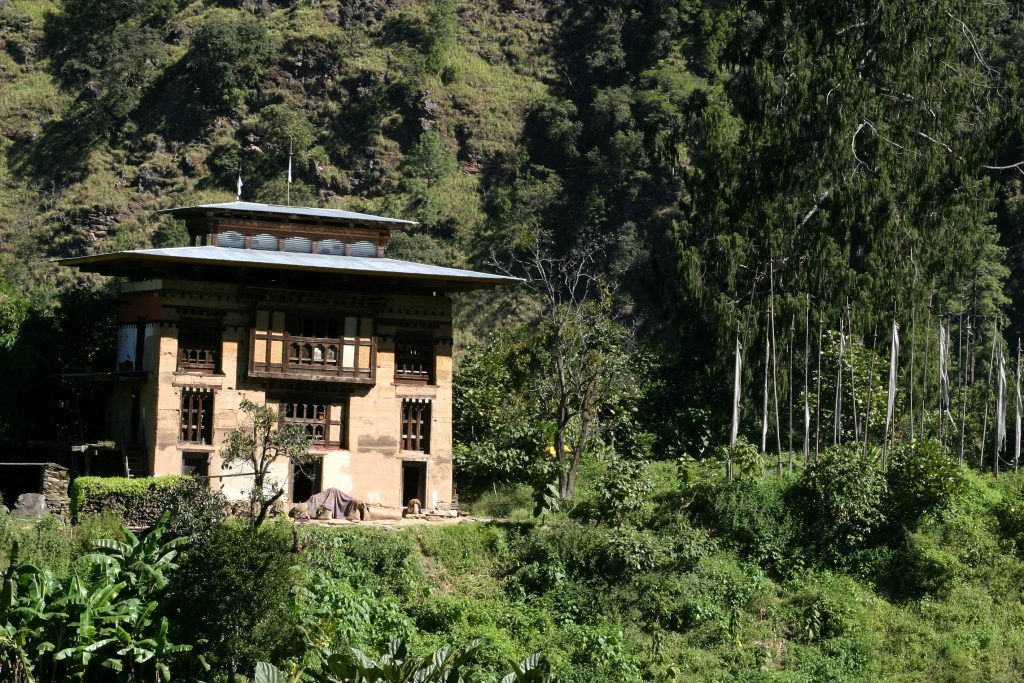Bhutanese Architecture – Unique and Artistic
Unique and Artistic wouldn’t be off track in saying that Bhutanese architecture offers the best lesson in architectural combination and integration. Above everything else, it offers a fine, delicate balance between ecological setting, culture, architecture and art. Be it a farmhouse, a city building or a Dzong, the same architectural form, materials, aesthetic compositions and incorporation of the arts complement each other in a harmonious manner.

For outsiders, especially students of design and architecture, it is worthwhile to visit Bhutan and be able to experience such a level of architectural integration and experience firsthand sustainable architecture. Over the years, the focus has shifted to green architecture that is energy and resource intensive and supportive of our ecological settings. And, for this, Bhutan is the perfect example.
Bhutanese houses, given its design and character, are relatively spacious and take advantage of natural light. Timber, stone, clay and adobe bricks are typical construction materials. Outside the main towns and cities, family residences are usually three-storied with room for livestock on the ground floor, storage and sometimes living quarters on the second floor, and on the floor living quarters and a shrine. Between the third floor and the roof, an open space is usually kept for open-air storage. Boulders over lath are used to hold down wooden shingles on the roof truss.
With time, Bhutanese architecture has evolved and has today attained a character of its own. Unique expressions of materials, structural system and iconography intertwined with Buddhism are its best features. Also, Bhutanese architecture bears a strong visual imagery and perception apart from being eco-friendly and sustainable. Of late, Bhutan has undergone drastic changes in politics,economy,culture and society. But,despite that, Bhutanese architecture and the imagery associated with it has become the country’s national identity to outsiders and locals alike. Every building in Bhutan contains the same format and style as created by traditional architecture some hundreds of years ago.
British political officer John Claude White traveled to Bhutan at the turn of the 20th century and was the only foreigner present in 1907 at the coronation of Bhutan’s First King. White in a 105-page report in the April 1914 National Geographic magazine wrote: “It is impossible to find words to express adequately the wonderful beauty and variety of scenery I met during my journeys in Bhutan, the grandeur of the magnificent snow peaks and the picturesque charm of the many wonderful forts and other buildings I came across.”
Bhutan is a country that adheres to the philosophy of Gross National Happiness(GNH). The concept implies that sustainable development should take a holistic approach towards notions of progress and give equal importance to non-economic aspects of wellbeing. The concept of GNH has often been explained by its four pillars: good governance, sustainable socio-economic development, cultural preservation, and environmental conservation. The last three pillars are very much apparent and visible in Bhutanese architecture.

